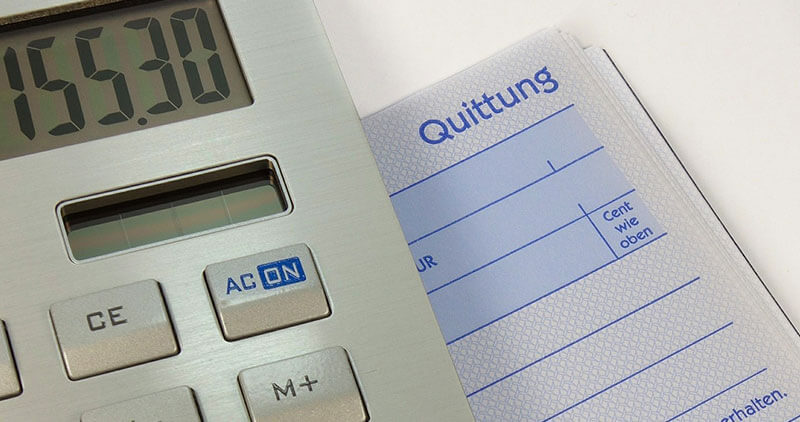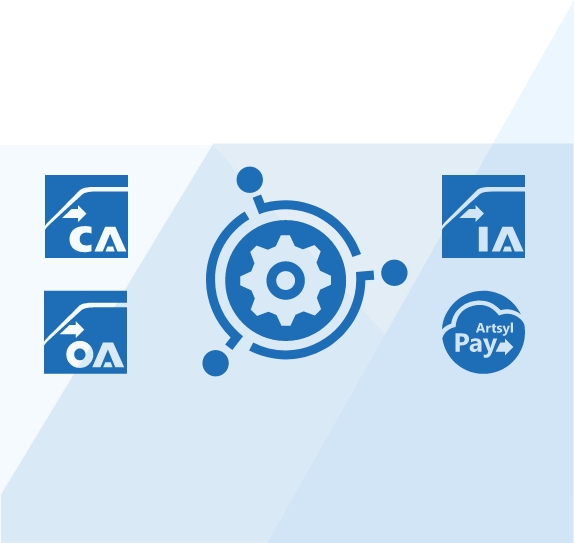Managing accounts payable is a crucial part of every business process. Late payments can cause disruptions in supplier relationships, leading to lower efficiency and higher costs. Businesses increasingly turn to automation and payment optimization to avoid these challenges to streamline the accounts payable process. This article will explore the benefits of AP automation and payment optimization on business efficiency.

Simplify your invoice processes with InvoiceAction!
Unlock the potential of secure cloud invoicing and seamless integration. From vendor management to cash flow optimization, Artsyl empowers you to control your invoices easily. Experience faster, more accurate invoice processing with Artsyl!
What is AP Automation?
AP Automation, or Accounts Payable Automation, refers to the use of technology and software solutions to streamline and automate the processes involved in managing and processing accounts payable transactions within the finance department of an organization. It aims to reduce manual and paper-based tasks, improve efficiency, accuracy, and control, and enhance the overall AP workflow.
Typically, AP Automation involves the following key components. Let’s discuss them in more detail.
Invoice Processing
Automation tools extract relevant data from invoices, such as vendor information, invoice number, and payment details, using optical character recognition (OCR) technology. This eliminates the need for manual data entry and reduces the risk of errors.
Invoice Automation Software
Related Videos
Workflow Automation
AP Automation software routes invoices through predefined approval workflows, ensuring proper authorization and minimizing delays. It allows for electronic routing, notifications, and reminders, facilitating collaboration between departments and stakeholders in the approval process.
Purchase Order (PO) Matching
The system can automatically match invoices to corresponding purchase orders and receipt documentation, ensuring accuracy and preventing discrepancies. This helps organizations identify any discrepancies and exceptions for further review and resolution.
Electronic Payments
AP Automation enables electronic payment methods, such as electronic funds transfers (EFT) or virtual credit card payments, to streamline the payment process and improve cash flow management. It reduces the reliance on paper checks and manual payment processing.
Reporting and Analytics
Automation tools provide real-time visibility into AP metrics, allowing finance teams to track invoice statuses, payment cycles, and vendor performance. This data can be used for reporting, analysis, and decision-making purposes, providing insights to optimize processes and identify areas for improvement.
The benefits of AP Automation in finance include increased efficiency, reduced manual errors, improved data accuracy, faster processing times, enhanced compliance and control, better vendor management, and cost savings through process optimization.
Do you want to free up resources, minimize administrative burdens, and focus on more strategic financial activities? This is possible by automating payment tasks.
Learn what ArtsylPay flexible and integrative payment processing solution can do for your business.
Book a demo now
The Role of Payment Optimization in Finance
Payment optimization in finance refers to the strategic management and optimization of payment processes within an organization to maximize efficiency, cost savings, and overall financial performance. It involves implementing strategies and technologies to streamline payment workflows, reduce costs, enhance cash flow management, and improve the overall payment experience for the organization and its stakeholders.
Here are some key components and strategies involved in payment optimization:
- Payment Method Optimization: Analyzing and selecting the most suitable payment methods for various transactions based on cost, speed, security, and convenience. This may include leveraging electronic payment methods, such as ACH transfers, virtual cards, or mobile wallets, to reduce reliance on paper checks and manual processes.
- Vendor Payment Terms: Negotiate favorable payment terms with vendors to optimize cash flow and take advantage of discounts, early payment incentives, or extended payment terms. This involves managing payment terms strategically to maintain good supplier relationships while maximizing financial benefits.
- Payment Automation: Implementing automation technologies, such as payment processing systems or enterprise resource planning (ERP) solutions, to automate payment processes, reduce manual errors, improve efficiency, and speed up payment cycles.
- Data Analytics and Reporting: Utilizing data analytics tools to gain insights into payment patterns, identify cost-saving opportunities, track payment performance, and optimize cash flow management. Organizations can identify trends, forecast cash flow, and make informed decisions regarding payment optimization strategies by analyzing payment data.
- Fraud Prevention and Security: Implementing robust security measures to protect against payment fraud and unauthorized access. This may include using encryption, multi-factor authentication, and implementing fraud detection systems to safeguard payment processes and sensitive financial information.
- Supplier Relationship Management: Strengthening supplier relationships by offering efficient and timely payments, proactive communication, and transparency. This can help optimize payment processes, negotiate better terms, and build trust and collaboration with key vendors.
The ultimate goal of payment optimization in finance is to streamline payment processes, reduce costs, improve cash flow management, enhance financial control and visibility, and provide a seamless payment experience for all stakeholders, including vendors, customers, and internal teams.
Streamline your invoice processing with Artsyl! Say goodbye to manual data entry and tedious paperwork. Experience the power of intelligent data capture, automated workflows, and real-time visibility. Take control of your AP processes and drive efficiency like never before.
Book a demo now
How AP Automation and Payment Optimization Are Connected
In today’s business world, automation is essential in improving efficiency, reducing errors, and cutting costs. Accounts payable automation and payment optimization are two such processes that organizations are adopting to streamline their financial operations.
Accounts payable, or AP, automation is focused on digitizing invoice processing and payment workflows, while payment optimization focuses on finding the most cost-effective payment methods for the organization. Let’s explore how AP automation and payment optimization are connected and the benefits they offer businesses.
Streamlined Processes
AP automation enables businesses to streamline their invoice processing workflows by automating tasks like data entry, approval routing, and payment processing. This results in faster processing times, reduced errors, improved data accuracy, and increased invoice and payment status visibility.
Payment optimization complements this by consolidating payment methods like wire transfer, ACH, and virtual cards. By consolidating these methods, businesses can reduce payment processing times and lower costs.
Increased Cash Flow
AP automation and payment optimization can help businesses improve their cash flow. The faster invoice processing and payment processing times enabled by AP automation can help businesses manage cash flow more effectively.
Payment optimization can improve cash flow by offering businesses early discounts and rebates. By taking advantage of these incentives, businesses can reduce costs and improve their financial position.
Better Supplier Relationships
AP automation and payment optimization can also help improve supplier relationships. With AP automation, businesses can improve invoice accuracy, which leads to faster payment processing and fewer payment errors.
Payment optimization further strengthens supplier relationships by offering payment options that suppliers prefer. For example, some suppliers may prefer virtual cards over wire transfers, and by offering this option, businesses can better meet their suppliers’ needs. This can improve supplier satisfaction and lead to better business partnerships.
Increased Security
AP automation and payment optimization enhance the security of payment processes. AP automation can reduce the risk of invoice fraud by validating supplier information and automatically detecting potential duplicate invoices.
Payment optimization can enhance security by offering secure payment methods like virtual cards. Virtual cards generate unique, one-time-use card numbers that protect against fraud and reduce the risk of payment errors.
Data-Driven Decision Making
AP automation and payment optimization can help businesses make better-informed decisions. Businesses can collect and analyze data on their invoice and payment workflows by digitizing their financial processes. For example, this data can:
- Provide valuable insights into payment trends, supplier payment history, and payment methods.
- Help businesses identify areas for improvement and make data-driven decisions to optimize their financial processes further.
Accounts payable automation and payment optimization work together to help businesses streamline their invoice processing and payment workflows, reduce costs, and improve financial visibility.
Boost your order processing efficiency with OrderAction! Artsyl’s intelligent solutions optimize your entire order management workflow, from capturing orders to automating fulfillment.
Book a demo now
The Advantages of AP Automation and Payment Optimization for Your Business
As your business grows, the accounts payable (AP) process can become increasingly complex and time-consuming. From manually entering invoice data to cutting checks and reconciling vendor accounts, AP tasks can consume significant time and resources.
Fortunately, with technology solutions such as AP automation and payment optimization, you can streamline your accounts payable process and reduce costs, errors, and inefficiencies. In this section, we will discuss the business efficiency benefits of AP automation and payment optimization.
Reduced Error Rates Through Automation
Accounts payable automation reduces the risk of invoice processing and payment process errors. Automation software can scan each invoice to ensure accuracy, match invoices and purchase orders, and verify that amounts are correct.
Automated payment systems can also reduce payment errors, such as duplicate payments, and prevent late payment penalties. Overall, AP automation can help to significantly reduce processing errors, freeing up employee time and resources to focus on other essential tasks.
Speed and Accuracy of AP Processes
With AP automation, you can significantly reduce the time it takes to process invoices and cut checks. By automating the data entry process with optical character recognition (OCR) technology, you can eliminate errors caused by manual data entry, improve accuracy, and reduce the risk of fraud.
AP automation also reduces the time it takes to obtain approval for invoices, making vendor payments faster and more efficient.
Lower Processing Costs through Reduced Human Intervention
Automated payment and accounts payable systems can help streamline the process, reducing the need for staff involvement. Invoices and payments can be automatically processed and matched based on predefined rules, reducing the need for manual intervention and improving accuracy. This can lead to significant cost savings in terms of staff time and resources and reduce the risk of errors in the process.
There’s another way how payment optimization can help reduce costs. Businesses can leverage their buying power to negotiate better terms with vendors by consolidating various payment types into a single payment file.
Additionally, payment optimization can help reduce costs associated with check printing and mailing fees, increase early payment discounts, and reduce fraud risk. Automated payment processing also eliminates the need for manual reconciliation, reducing labor costs and improving accuracy.
Streamlined AP and Order Processes
The previous benefit is directly linked to yet another significant benefit of AP automation is the purchase order (PO) matching process automation. By matching invoice data to PO data, you can detect discrepancies, prevent overcharges, and reduce the need for manual intervention.
Aside from that, AP automation enables automatic approval workflows, reducing the need for manual routing and approval of invoices. Approval workflows can be tailored to match your company’s unique approval processes and requirements, thus further streamlining the AP process.
Faster Disbursement of Funds Through Payment Optimization
Payment optimization can help businesses to get the most value from their payment methods, leading to faster disbursement of funds. Businesses can reduce processing time and improve cash flow by working with suppliers to identify the most efficient payment methods, such as electronic payment methods. Faster payment processing can also help to reduce late payment penalties and improve supplier relationships, leading to better procurement deals and more reliable delivery times.
Enhanced Data Reporting and Management
AP automation and payment optimization improve your AP process visibility. AP automation and payment optimization can provide businesses with advanced data analysis and reporting capabilities to monitor performance and highlight inefficiencies. Businesses can use data to track payment processing times, identify bottlenecks, and improve supplier relationships.
Automated workflows provide real-time updates on invoice status, enabling businesses to track invoice volume and spend more effectively. Automated reporting consolidates historical data and can provide valuable insights into your spending, vendor patterns, and invoice processing speed. This data can help you identify areas for improvement, set benchmarks, and forecast future cash flows.
Additionally, advanced analytics can help identify trends in the accounts payable process, enabling businesses to make better strategic decisions.
Improved Sustainability
Another important but often overlooked benefit: AP automation and payment optimization can help businesses to improve their environmental sustainability by reducing paper usage and waste. Electronic invoicing and payment methods are more environmentally friendly than traditional paper-based methods, reducing the carbon footprint of the accounts payable process.
Additionally, by streamlining the payment process, businesses can reduce their overall resource usage, leading to a more sustainable business model.
Seamlessly integrate your order processing with your ERP system, streamline order entry, and enhance customer satisfaction. Embrace the power of OrderAction and transform your order processing into a seamless,
error-free operation.
Book a demo now
Final Thoughts
Automating the accounts payable process and optimizing payments can improve business efficiency by reducing processing time, minimizing errors, and improving supplier relationships. AP automation and payment optimization can improve sustainability by reducing paper usage and waste.
As businesses continue looking for ways to improve their performance, AP automation and payment optimization should be considered essential services to manage accounts payable processes. With improved efficiency, accuracy, and sustainability, businesses can streamline processes and focus on strategic development and growth.
FAQ
What is AP Automation?
AP Automation, or Accounts Payable Automation, refers to using technology and software solutions to streamline and automate the processes involved in managing and processing accounts payable transactions. It aims to reduce manual tasks, and improve efficiency, accuracy, and control in the AP workflow.
How does AP Automation benefit organizations?
AP Automation offers several benefits, including reduced manual data entry, faster invoice processing, improved accuracy, streamlined approval workflows, enhanced visibility into AP metrics, cost savings through process optimization, and better vendor management.
What is payment optimization?
Payment optimization is the strategic management and optimization of payment processes within an organization. It involves selecting suitable payment methods, negotiating favorable payment terms with vendors, implementing automation technologies, utilizing data analytics for insights, ensuring security and fraud prevention, and strengthening supplier relationships to improve efficiency, cash flow management, and overall financial performance.
How does payment optimization benefit organizations?
Payment optimization brings several advantages, including reduced payment processing costs, improved cash flow management, increased efficiency, enhanced financial control and visibility, better vendor relationships, access to early payment discounts or incentives, and a streamlined payment experience for all stakeholders.
Can AP Automation and payment optimization work together?
Absolutely! AP Automation and payment optimization are complementary strategies. By combining AP Automation tools and processes with payment optimization strategies, organizations can achieve even greater efficiencies, cost savings, accuracy, and control in their accounts payable and payment workflows. Automation can streamline invoice processing, approval workflows, and payment execution, while payment optimization ensures the selection of the most cost-effective and efficient payment methods and terms.
How can organizations get started with AP Automation and payment optimization?
Organizations can assess their current AP and payment processes to get started, identify pain points, and determine their specific goals and requirements. They can then explore AP Automation software solutions and payment optimization strategies, engage with vendors or consultants specializing in these areas, and gradually implement changes and improvements aligned with their objectives.
By adopting AP automation and payment optimization supported by ArtsylPay, you can improve cash flow, strengthen supplier relationships, enhance payment security, and make better-informed decisions.
If your business still needs to adopt AP automation and payment optimization, now is the time
to explore their benefits.
Book a demo now
Are AP Automation and payment optimization suitable for businesses of all sizes?
Yes, AP Automation and payment optimization can benefit businesses of all sizes. The specific tools, technologies, and strategies implemented may vary based on the organization’s scale, complexity, and industry. Still, the underlying principles of streamlining processes, improving efficiency, and optimizing payments apply to businesses across various sectors and sizes.
How long does it take to see AP Automation’s and payment optimization’s benefits?
The timeline for experiencing the benefits of AP Automation and payment optimization varies depending on factors such as the complexity of existing processes, implementation speed, user adoption, and the level of optimization achieved.
However, organizations often see improvements in efficiency, accuracy, and cost savings within a few months of implementing these strategies, with further benefits becoming more evident over time.




 Credit Card vs. Virtual Credit Card: The Pros and Cons
Credit Card vs. Virtual Credit Card: The Pros and Cons Payment Processing: Security, Compliance, and Fraud Prevention
Payment Processing: Security, Compliance, and Fraud Prevention Improving Accounts Payable Invoice Processes
Improving Accounts Payable Invoice Processes Template for Creating Purchase Orders
Template for Creating Purchase Orders Virtual Credit Card Adoption: A CFO and Financial Controller Perspective
Virtual Credit Card Adoption: A CFO and Financial Controller Perspective ACH Payments and Transfers: The Ins and Outs
ACH Payments and Transfers: The Ins and Outs
